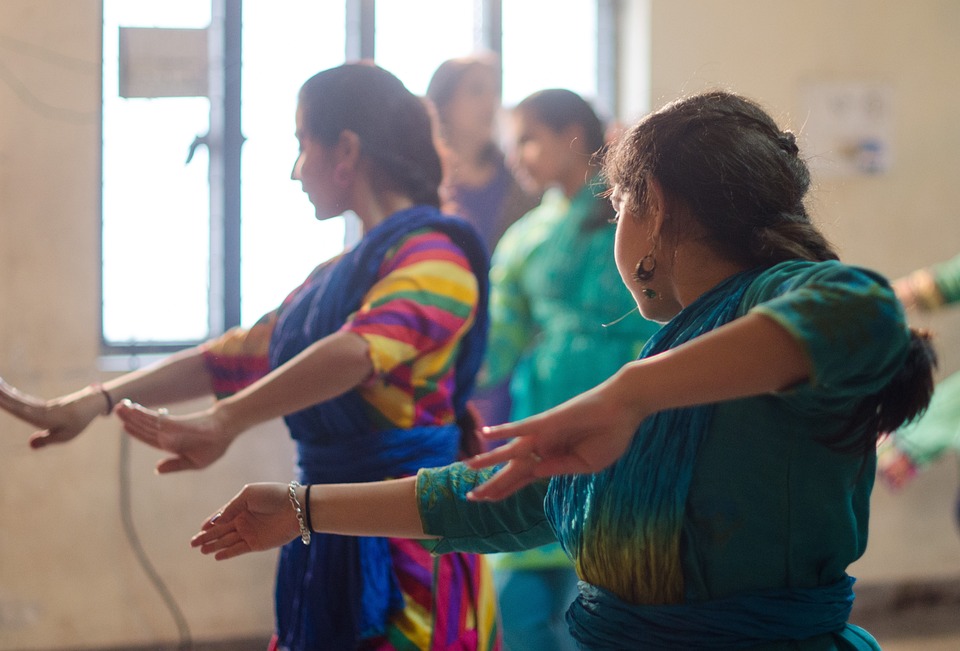Ad Code
Translate
Smart strategies for trading on crypto exchanges
October 20, 2025
Five Do’s For a Healthy Turnover That Bolsters Talent-Retention
October 20, 2025
Discover Honeybee Pharmacy (2025 Guide Important Consumer Tips)
October 14, 2025
What is Ozempic (semaglutide)? (Updated in 2025)
January 30, 2025
How To Find Suitable Properties In Cyprus?
October 20, 2025
Posture Bra: Improving Back Support and Comfort
October 20, 2025
10 Effective Strategies to Improve Domain Authority of Your Website
October 20, 2025
How the classical dance started in India
Joseph Nicholls
May 06, 2020
Indian classical dance
is known throughout the globe. India historically is also known as Bharatvarsha. Bharat is known as
headquarter for the appearance of various avatars
of Lord Vishnu. Lord Brahma born from lotus flower emerging from Lord Vishnu’s
navel, was appointed as the creator of Srishti.
Lord Brahma is believed to conceive dance from four Veda’s and then, he
instructed sage Bharat Muni to write Natyashastra.
Natyashastra is a handbook consisting of agreements on performing arts
and this led to the trend of dance and drama. The text got compiled somewhere
in 200 BCE but historians also have a second opinion that compilation was
between 800 BCE and 500 BCE. It consists of 36
lessons with around 6000 poetic verses describing performance arts.
A wide
range of topics has been covered in the text. The texts consist of dramatic
composition, steps to designing plays and the stage erecting techniques and
various methods to host. It also consists of different genres of acting, bodily
actions and styles, bodily decoration and different outfits, role and
objectivity of an art director. It also provides knowledge of everything
related to music, singing, musical instruments and ways to incorporate music
with dancing and acting.
Even though every Indian classical dance form developed in different regions, their roots are the
same. The origin can be drawn from the aforementioned Sanskrit text ‘Natya
Shastra’. India is known for its spirituality and rich cultural heritage. Indian
classical dance also known as
“kshatriya Devesh” in Sanskrit is a storehouse for various arts which
originated in Hindu religious musical theatre styles.
Indian temples are the birthplace for all the classical dances. Worshipping God was the main
aim. All classical dances are designed and performed in praise of God. Name a
classical dance and you will find it is in glorification of God. Seven popular Indian classical dances are – Bharata
Natyam it originated in Tamil Nadu, kathak originated in UP, Kathakali & Mohiniyattam originated in Kerala,
Kuchipudi originated in Andhra Pradesh, Manipuri originated in Manipur, and
Odissi originated in Odisha.
A brief introduction to these classical dances
is as follows:
Bharat Natyam was once upon a
time performed by devadasis in temples of South. Kathak is traditionally a dance performed
in storytelling patterns in northern parts of
India. Kathakali also comes in the storytelling genre also, it is especially
known for heavy costumes, facemask and makeup whereas Mohiniyattam is dance depicting the famous Mohini murti avatar of
Vishnu to despise the demons. Kuchipudi was originally performed by a male
priest and it has steps like offering lamps, incense and flowers to deities.
Later it got adopted by females as well. Manipuri dance depicts Sri Radha krishna "Ras
lila" dance. While Odissi dance
is designed to glorify lord Jagganath
in Puri.
Other than an expression of
worship, Indian classical dance has
much more to become popular throughout the
world. It is a distinctive but very special kind of art. Today people dance to reflect their feelings,
thoughts, expressions and much more. Many believe it to be kind of yoga
because it involves innumerable mudras and physical action which keeps the body
tuned to nature. It is also an excellent exercise and connects one with
eternity and peace. Gradually, the dance has become an integral part of almost
all ceremonies that begins from birth to death.
Featured Post
DL Mining Launches Ethereum Contract Participation Service, Helping Users Earn $2K Stable Daily Returns
Zizo Gala-Mkhize-
October 20, 2025
Soapie Teasers
Sister Sites
Most Popular
List of 6,000+ Dofollow Commentluv Blogs FREE (Updated 2025)
January 16, 2025
Five Do’s For a Healthy Turnover That Bolsters Talent-Retention
October 20, 2025
Smart strategies for trading on crypto exchanges
October 20, 2025
Popular posts
List of 6,000+ Dofollow Commentluv Blogs FREE (Updated 2025)
January 16, 2025
How To Choose The Right Place For A Winter Campsite
March 06, 2023
Five Do’s For a Healthy Turnover That Bolsters Talent-Retention
October 20, 2025
Footer Menu Widget
Created By Blogspot Theme | Distributed By Gooyaabi Templates


Social Plugin